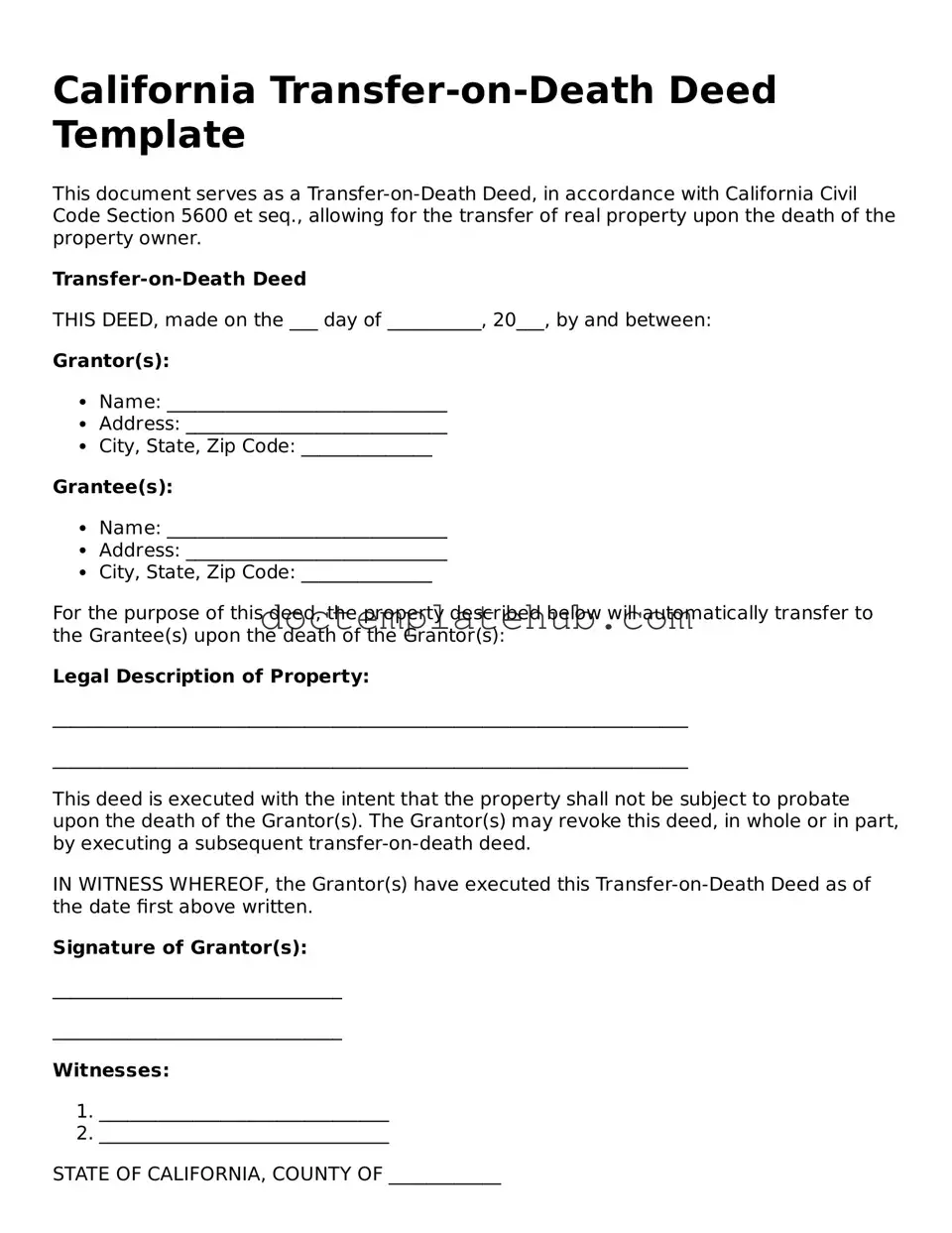What is a Transfer-on-Death Deed in California?
A Transfer-on-Death Deed (TOD Deed) is a legal document that allows property owners in California to designate a beneficiary who will automatically receive the property upon the owner's death. This deed bypasses the probate process, making the transfer of property simpler and quicker for heirs.
Who can create a Transfer-on-Death Deed?
Any individual who holds title to real property in California can create a Transfer-on-Death Deed. This includes homeowners, co-owners, and individuals with a vested interest in the property. However, it’s important to ensure that the deed is executed properly to be valid.
How do I complete a Transfer-on-Death Deed?
To complete a Transfer-on-Death Deed, you need to fill out the form with specific information, including the property owner’s details, a legal description of the property, and the name of the beneficiary. After filling out the form, it must be signed and notarized before being recorded with the county recorder's office where the property is located.
Is a Transfer-on-Death Deed revocable?
Yes, a Transfer-on-Death Deed is revocable. The property owner can change or revoke the deed at any time before their death. To revoke the deed, the owner must execute a new deed that explicitly states the revocation and file it with the county recorder's office.
What happens if the beneficiary predeceases the property owner?
If the designated beneficiary passes away before the property owner, the Transfer-on-Death Deed will not automatically transfer the property to the beneficiary's heirs. Instead, the property will be distributed according to the owner’s estate plan or California intestacy laws if there is no plan in place.
Can I name multiple beneficiaries in a Transfer-on-Death Deed?
Yes, you can name multiple beneficiaries in a Transfer-on-Death Deed. When doing so, it’s essential to specify how the property will be divided among them. You can designate shares, or you may choose to have the property transferred to all beneficiaries equally.
Are there any tax implications with a Transfer-on-Death Deed?
Generally, a Transfer-on-Death Deed does not trigger immediate tax consequences for the property owner. However, the beneficiary may face property taxes upon transfer. It’s advisable to consult with a tax professional to understand the specific implications based on individual circumstances.
Can a Transfer-on-Death Deed be used for all types of property?
A Transfer-on-Death Deed can be used for most types of real property, including residential homes and commercial properties. However, it cannot be used for personal property like vehicles or bank accounts. For those types of assets, different estate planning tools may be necessary.
How does a Transfer-on-Death Deed affect the property owner during their lifetime?
During the owner’s lifetime, a Transfer-on-Death Deed does not affect their rights to the property. The owner retains full control and can sell, lease, or mortgage the property as they wish. The deed only takes effect upon the owner's death.
Where can I obtain a Transfer-on-Death Deed form?
Transfer-on-Death Deed forms can be obtained from various sources, including online legal form providers, county recorder's offices, or estate planning attorneys. It’s important to ensure that the form complies with California law to ensure its validity.
